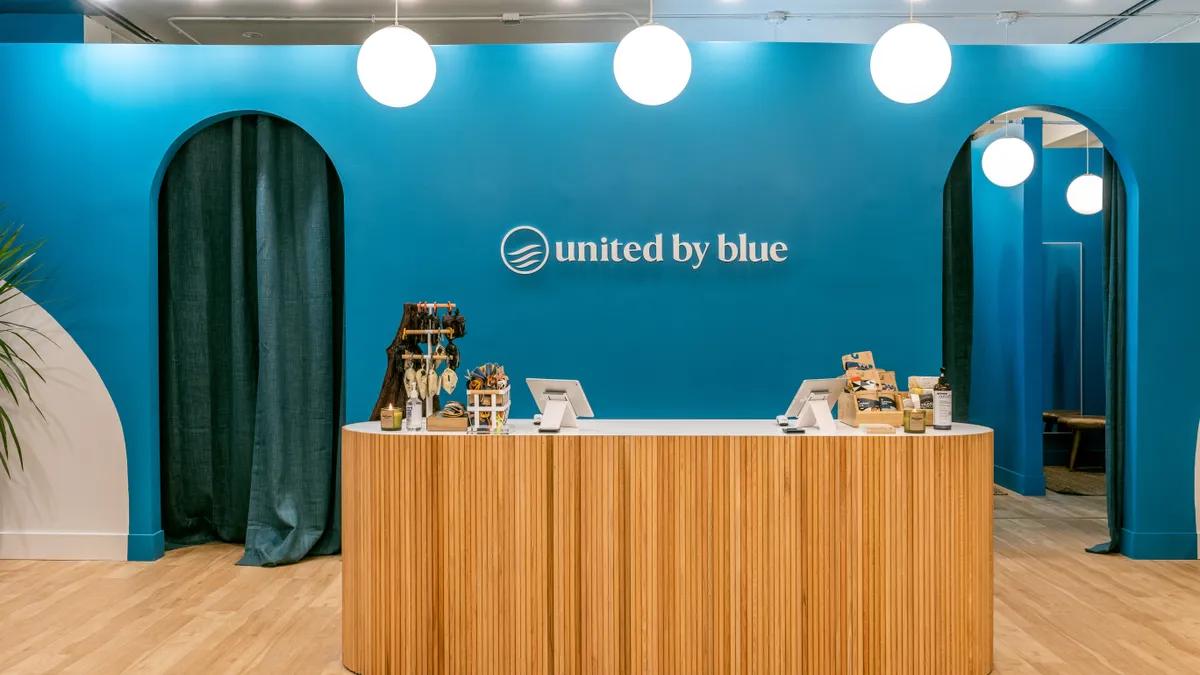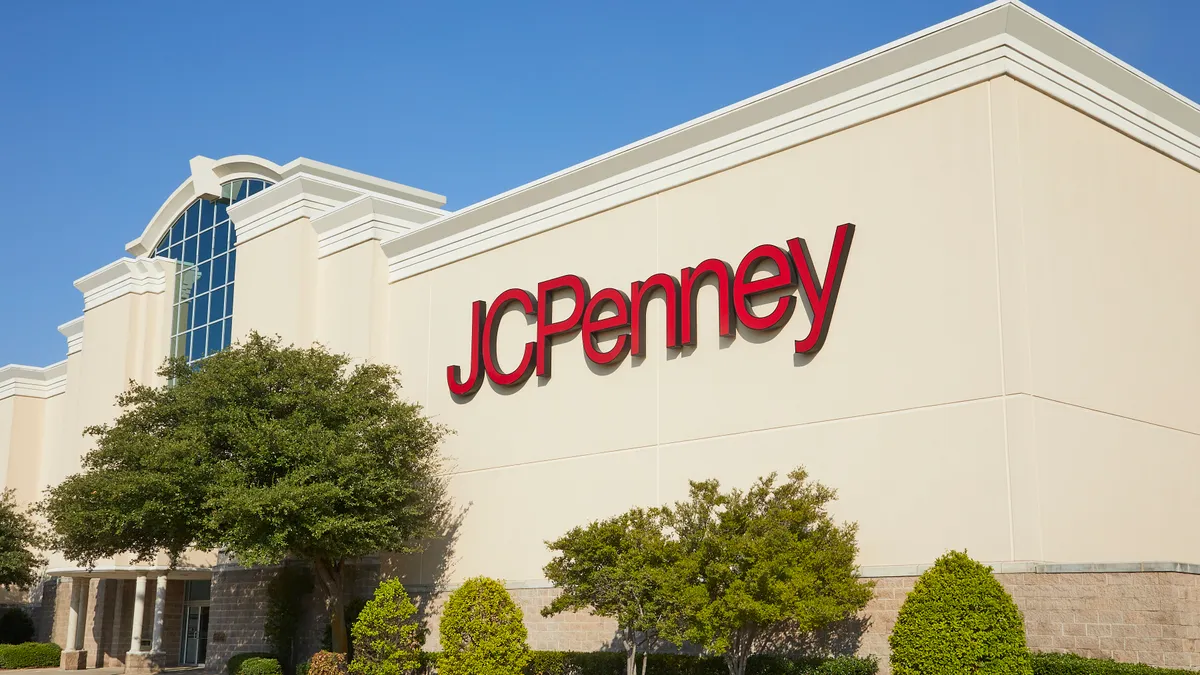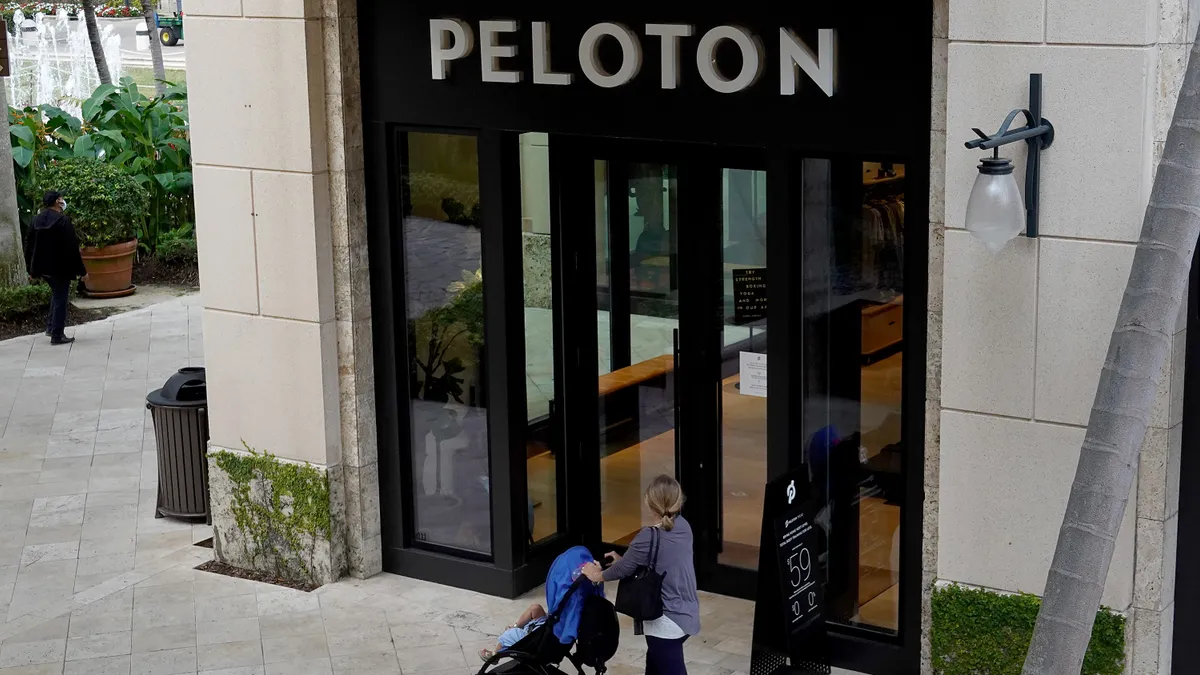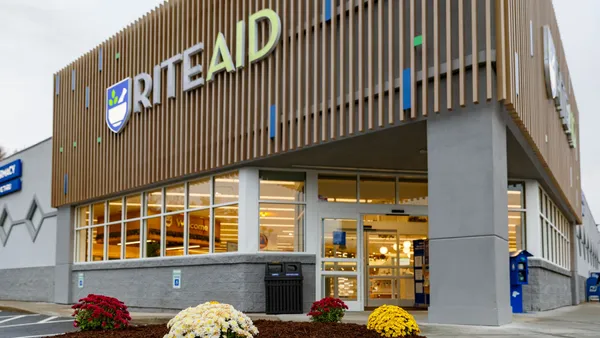Renewed faith in brick and mortar seems to have taken hold throughout the industry. Many brands that put their growth plans on ice over the past two years are returning to physical retail in force. Some companies with smaller store footprints shuttered them entirely during the pandemic and are now prepared to re-invest in the channel as conditions have normalized somewhat.
United By Blue, a sustainably focused apparel brand, is among those accelerating its store opening plans. Pre-pandemic, the company had just two stores, both in Philadelphia. Recent store openings in Chicago and Scottsdale, Arizona, have brought that total to four, and by the end of the year United By Blue plans to have six total locations.
That’s the first round of a much larger expansion plan. Mike Cangi, co-founder and brand director at United By Blue, said he sees the brand potentially tripling its footprint in 2023 by opening an additional 12 stores.
“There's an accelerated plan that we are working on right now that I realistically believe can get United By Blue to really every major city and market over the next few years,” Cangi said. “I think in the two- to three-year range, I can easily see us with several dozen United By Blue stores.”
Those stores will be a mix of United By Blue’s flagship model and a smaller, 1,500-square-foot format. Unlike many of its peers, though, United By Blue’s flagships aren’t just a matter of larger square footage and a more extensive product assortment: They double as cafes. And they don’t just contain small kiosks for coffee or a croissant. According to Cangi, about half of the total space is dedicated to the cafe concept.
That choice wasn’t just to be trendy, though there are plenty of experiential formats in retail that offer food and beverage as part of their draw. United By Blue is a mission-driven company that removes one pound of trash from oceans and waterways for every product purchased. Cangi and his co-founder Brian Linton realized early on that meant they would be working with volunteers throughout the communities they operated in, so having a physical touchpoint to engage with the community was important.
“That was an important piece for us, to make sure that we felt like if we had our own retail presence, we were not just kind of existing and doing business in the community,” Cangi said. “That we were actually a part of it, and able to activate the space before and after hours and find ways to bring people in and a place for people to not just shop but potentially do work or spend additional time. The best way to foster that sense of community, we felt, was through a cafe and coffee.”
So Cangi and Linton’s very first store ended up being a coffee and retail concept on the bottom floor of their office building in Philadelphia. When they opened it in 2013, they spent time working shifts behind the bar in addition to trying to grow the business. Now, United By Blue has two of those locations in Philadelphia, but the company is also opening smaller stores that only serve as retail destinations.
Both the Chicago and Scottsdale stores are retail-only concepts, and those will likely make up most of the company’s fleet going forward, with the cafe-style flagships opening in key cities in a “hub and spoke” type model.
But bringing coffee and organic food into its stores isn’t the only way in which United By Blue is going a bit off the beaten track; as it scales up its brick-and-mortar presence, United By Blue is also looking beyond its own shelves for products, serving the dual role of brand and retailer.
More space for more brands
United By Blue began its life as a wholesale brand with only a few products and a website mostly focused on its mission of cleaning up waterways. Now, it has hundreds of SKUs, a wholesale presence with partners like REI, and direct-to-consumer sales online and in its own stores. Over the past 18 months or so, the company has pivoted once again to start selling products from partnering brands on United By Blue’s website and its storefronts.
“We've been in the past two years really building out and focusing on the idea of having a more holistic, sustainable marketplace concept, where it's not just United By Blue products, but products from other brands that share our ethos, and are aligned with us when it comes to materials and manufacturing mission,” Cangi said.
Currently, about 20% of products sold by United By Blue come from other brands, and that could expand to 25% or slightly higher going forward. The change has come “really rapidly,” according to Cangi, but the company still plans to have the majority of the products it sells be from United By Blue instead of its partners.
It’s a similar effort to what DTC bedding brand Brooklinen has tried with its Spaces marketplace, which at launch sold complimentary products from furniture brand Floyd, plant brand The Sill and publishing company Taschen.
United By Blue spearheaded an effort in 2020 to send out a joint holiday catalog with a collection of other environmentally friendly brands that either held B Corporation status or were part of other organizations and certifications like 1% for the Planet and Climate Neutral. United By Blue is now selling many of those brands, in addition to others that have similar missions.
As just one subset of examples: Sunski sunglasses can be found on United By Blue’s accessories page, Stasher and Bee’s Wrap food storage products are in a kitchen section, and big-name brands including Vans and Teva are now a part of its footwear offerings. In fact, United By Blue has none of its own footwear, which is part of the appeal of selling other companies’ products.
“We have products that allow us to round out the mix and introduce our customers to great brands and great products that we don't necessarily make ourselves,” Cangi said. “Footwear is a good instance of a category that we do not make on our own but we have really great offerings of footwear from some other brands — and the retail stores allow us to further expand that footprint.”
As to where it might open stores, the company is targeting areas where it has strong e-commerce sales and strong sales through wholesale partners. For the next couple of quarters, that includes East Coast markets like Boston and New York City. The company’s retail-only stores will focus on “high street locations” with a lot of traffic, but the flagship stores will have a more varied footprint. Some of United By Blue’s cafe and retail concepts might open in top-tier cities, but Cangi is also considering “tertiary” markets like Philadelphia that have cheaper real estate but are still big-city opportunities.
Maintaining a sustainable focus while scaling
As United By Blue expands its product assortment and store count, the company is factoring in its sustainable mission to those plans. The company will keep its commitment of removing one pound of trash from oceans and waterways whether a customer buys a United By Blue product or, say, a Teva product.
Having more stores means the brand will have more places to act as a home base for waterway cleanups, which it plans to conduct multiple times per year depending on the market and how close a given store is to water.
Opening stores might seem against the principle of sustainability, but when the other options are mailing items directly to consumers or directly to wholesale partners, United By Blue said operating physical stores is actually the most sustainable option it has — and that’s part of the reason for its brick-and-mortar expansion.
In its bid to become Climate Neutral Certified (which just happened in April), United By Blue had to look closely at its carbon footprint. E-commerce was “probably the worst” from a carbon footprint perspective, according to Cangi, because it requires shipping individual products directly to consumers. Wholesale creates significantly fewer carbon emissions, since United By Blue can make large shipments to wholesale partners, but returns add a level of complexity that isn’t present in stand-alone retail stores.
“With a physical retail store, we are getting those same efficiencies like we have when we're sending something to a wholesale partner, but now we're shipping even larger volumes and quantities of product because all of our retail stores are getting large amounts of product that is United By Blue product,” Cangi said. “It's not just a single collection or a single style that some of our retailers might be getting.”
And having more retail space means putting more environmentally friendly brands in front of consumers in an attempt to push some of their spend to better “alternatives.”
“We're showing customers that there are alternatives, and that there's a better way to do things,” Cangi said. “And eventually as we continue to educate consumers, that is going to shift expectations of consumers, which then in part forces the larger brands and larger manufacturers to make systemic change on their end.”






















